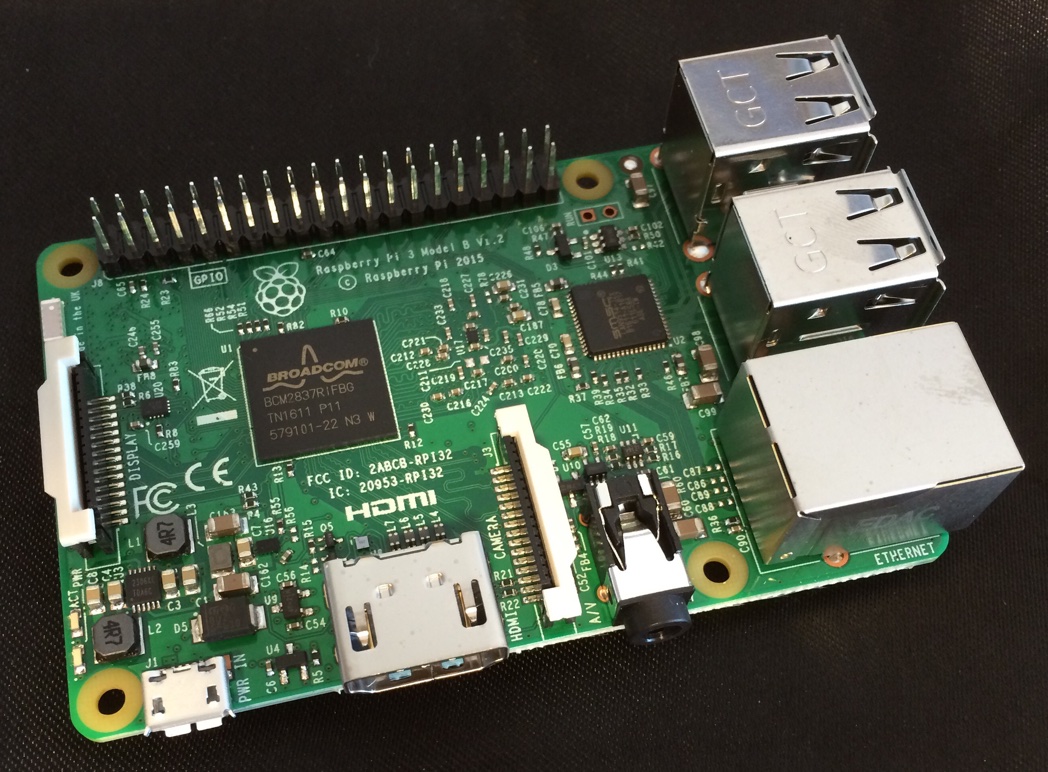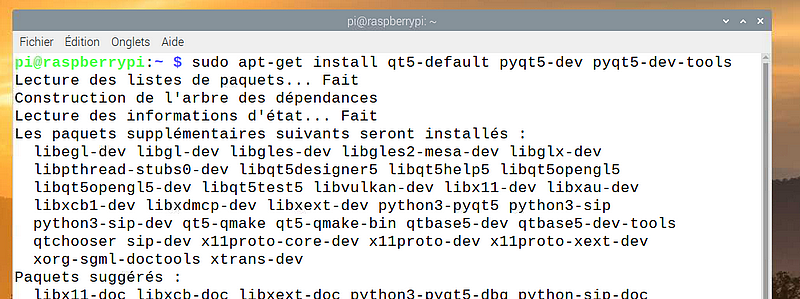

- Install pyqt5 on raspberry pi how to#
- Install pyqt5 on raspberry pi install#
- Install pyqt5 on raspberry pi update#

Input_details = interpreter.get_input_details() Interpreter = tflite.Interpreter(model_path=model, num_threads=4) Im = np.array(b, copy=False, dtype=np.uint8).reshape((normalSize,normalSize, 4)) import tflite_runtime.interpreter as tflite If we detect any objects we’ll then draw a rectangle around them, and if we passed our code a label file, we’ll label our detected objects. Here we start the camera with a preview window, and then repeatedly pass the image buffer to TensorFlow, which will run our object detection model on the image. Because the importance of bananas to machine learning researchers can not be overstated. Once everything is installed we can go ahead and build our demo, and as everyone knows the obvious objects to look for are apples🍎 and of course bananas🍌. This is significantly easier than installing the full TensorFlow package.
Install pyqt5 on raspberry pi install#
Since we’re going to be inferencing, rather than training, from our Python code we can get away with installing the lightweight TensorFlow Lite runtime library along with some other things we’ll need: $ sudo apt install build-essentials bashrc file: export PYTHONPATH=/home/pi/picamera2:/home/pi/libcamera/build/src/py:/home/pi/kmsxx/build/py:/home/pi/python-v4l2 Installing TensorFlow Lite For example, you could put the following in your. To make everything run, you will also have to set your PYTHONPATH environment variable. $ git clone sudo pip3 install opencv-python=4.4.0.46 $ sudo apt install -y libfmt-dev libdrm-devīefore then going on to install the Picamera2 library itself: $ cd $ meson build -buildtype=release -Dpipelines=raspberrypi -Dipas=raspberrypi -Dv4l2=true -Dgstreamer=enabled -Dtest=false -Dlc-compliance=disabled -Dcam=disabled -Dqcam=enabled -Ddocumentation=disabled -Dpycamera=enabled $ sudo apt install -y libglib2.0-dev libgstreamer-plugins-base1.0-dev $ sudo apt install -y qtbase5-dev libqt5core5a libqt5gui5 libqt5widgets5 $ sudo apt install -y libgnutls28-dev openssl libtiff5-dev
Install pyqt5 on raspberry pi update#
Right now Picamera2 is in preview release, which means installing it is significantly more complicated than it will eventually be, because you first need to build and install a fork of the libcamera library along with some DRM/KMS bindings directly from GitHub: $ sudo apt update So, let’s get started! Installing the Picamera2 library The aim is to put together something that’ll use the Picamera2 library and its QtGL preview window, and overlay real-time object detection on the stream.
Install pyqt5 on raspberry pi how to#
So for me, it was time to figure out how to get Picamera2 and TensorFlow talking. In the past I’ve spent a lot of time working with TensorFlow and TensorFlow Lite on Raspberry Pi and other platforms and, as a result, I spent a lot of time working with the old Picamera library. TensorFlow Lite performing real-time object detection using the Raspberry Pi Camera and Picamera2


 0 kommentar(er)
0 kommentar(er)
